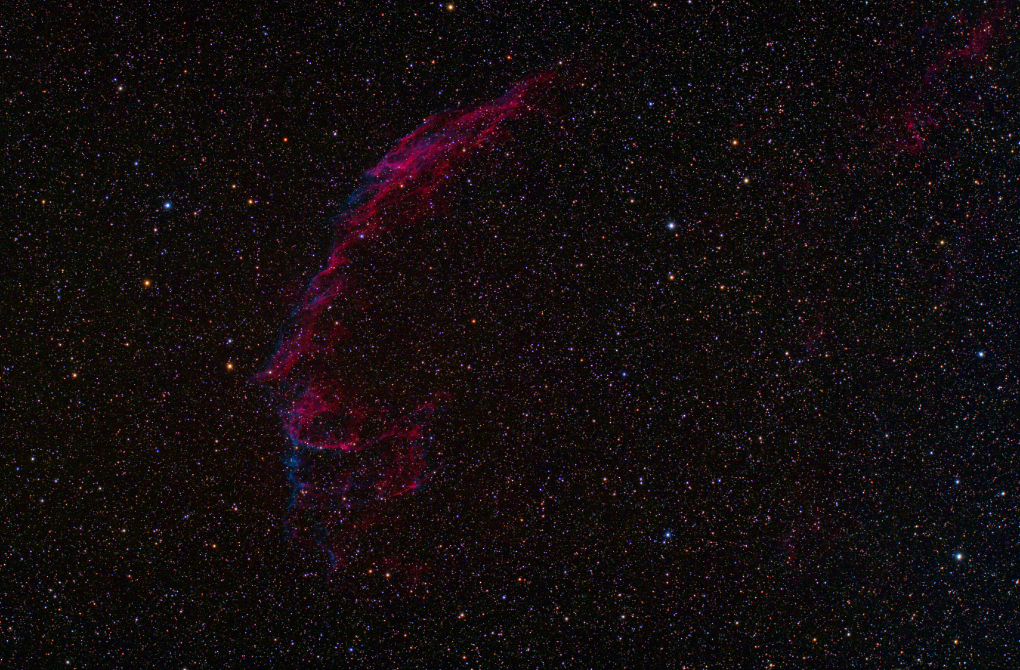Astrophotography
M31:
My most recent work is of Andromeda, also known as M31, taken on December 21st, 2020. It is the closest galaxy to our own, and in a couple billion years it will collide with us. I took this image with my friend, Luke. He is currently writing a magazine article on the process of taking such an image, and when it is done, I will post it for anyone that is curious about all the work that goes into one image. You might be thinking “Isn’t M31 a spiral galaxy, why is it red and not blue?” Well, that is a good question, we concluded, it is because the DLSR camera we use has hydrogen alpha sensitivity. This translates to a redder image. If our DLSR camera did not have this feature, then M31 would look a lot bluer – notably in the spiral arms. The center of a spiral galaxy is normally red since there is no new star formation and all the bluer stars died; however, the spiral arms have star formation, and the blue stars have much more luminosity than the red stars causing the spirals to look blue.

Eastern Veil Nebula:
The first piece of astrophotography is of the Eastern Veil Nebula. The Eastern Veil is part of the Cygnus Loop, which is a supernova remnant – an event occurs at the end of a star’s life given the right conditions. I took this in Astro-lab course as my final project. My lab partner and I sat in the dome of the Allegheny Observatory and took data for a couple of hours when the skies were clear. Unfortunately, early in the semester there were wildfires in California causing the atmosphere to be hazy. It is crazy to think the wildfires on the other side of the country would affect us in Pittsburgh. To get usable data we had to observe in the winter, causing us to sit in the observatory dome for 2 hours in 20-degree weather. However, overserving in the winter is optimal condition because the atmosphere has less moisture in the air which means the light traveling from the Eastern Veil Nebula interacts with less atmosphere giving us a crisper image. The full image is 500MBs and that seems a little too large to put onto a website. If anyone wants to see the full image, please send me an email.
